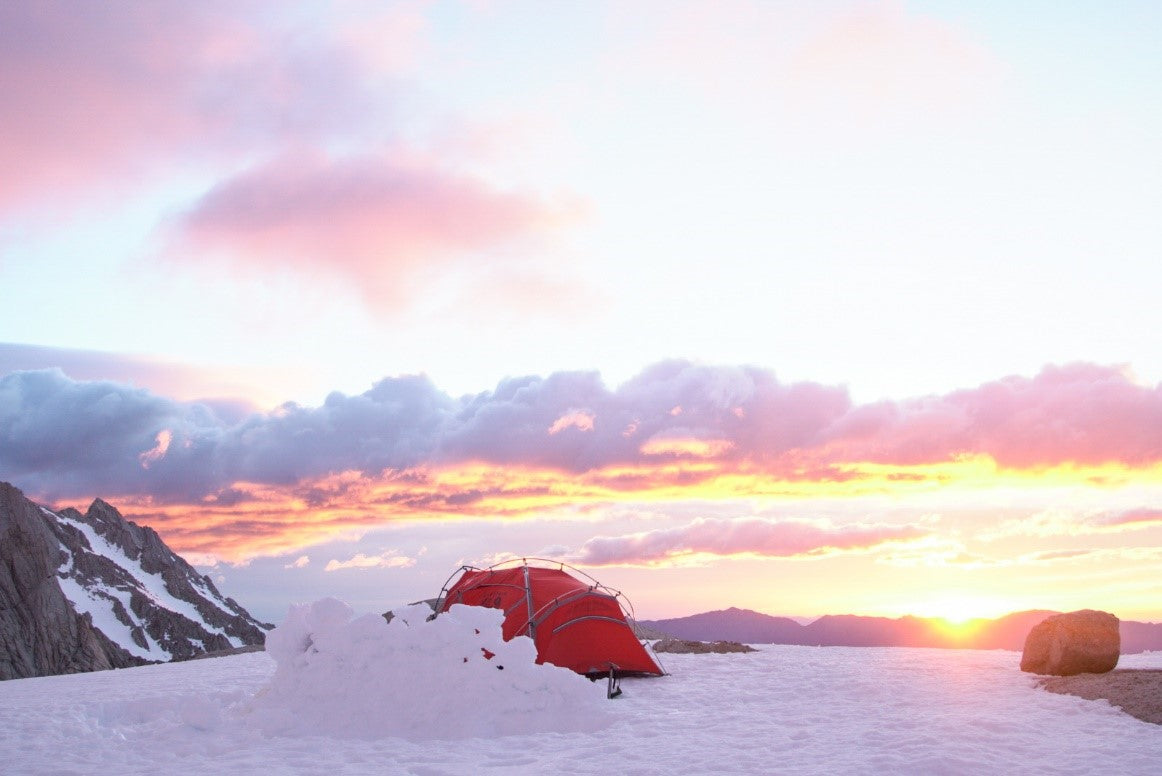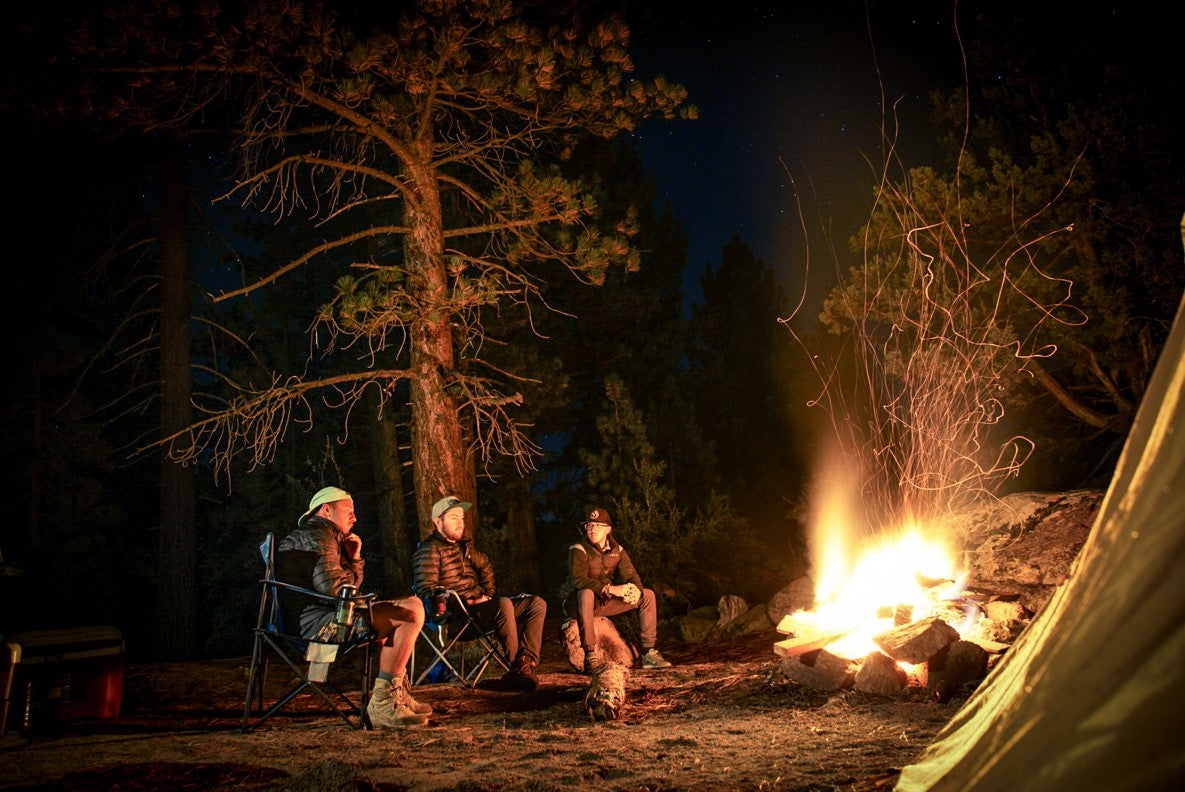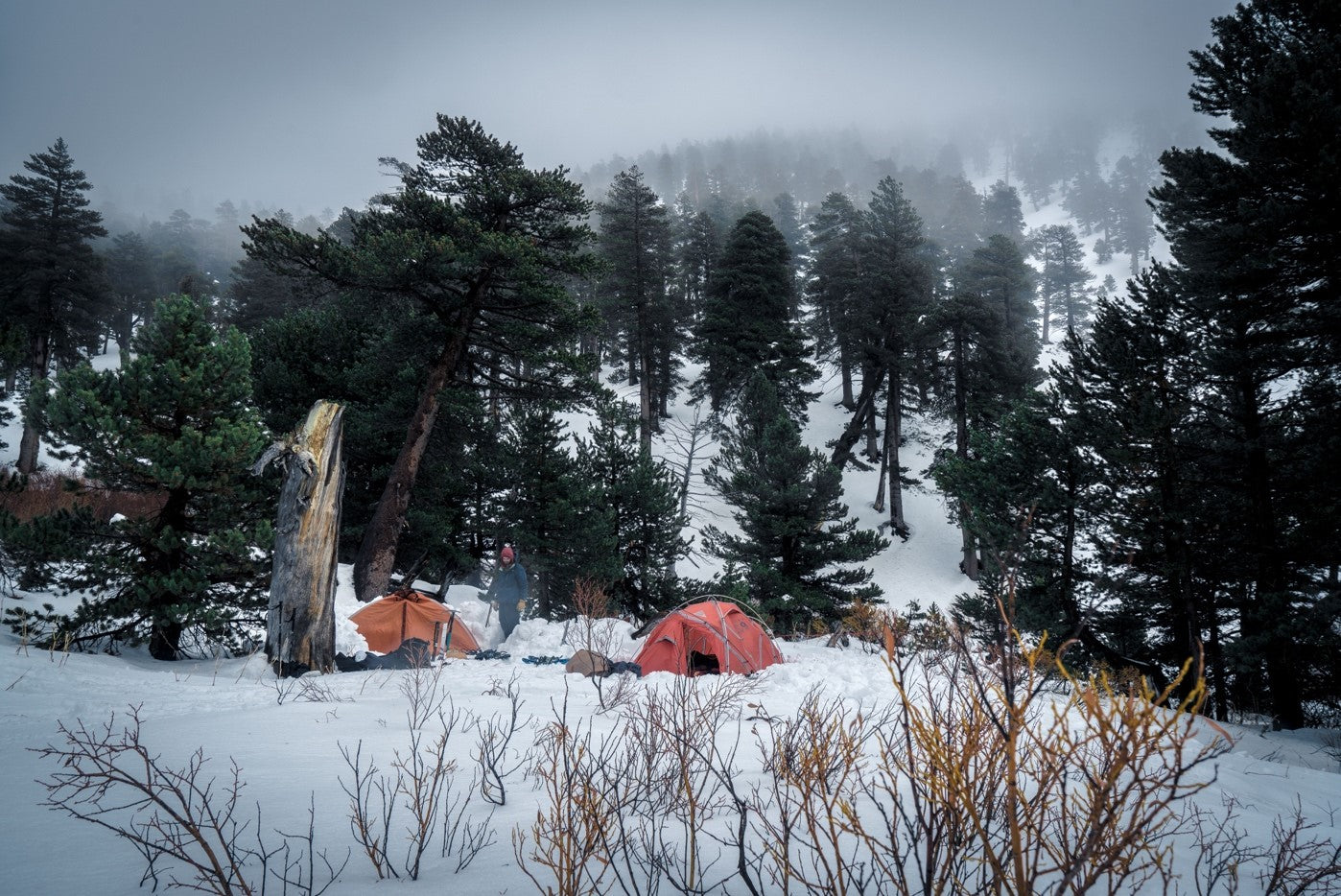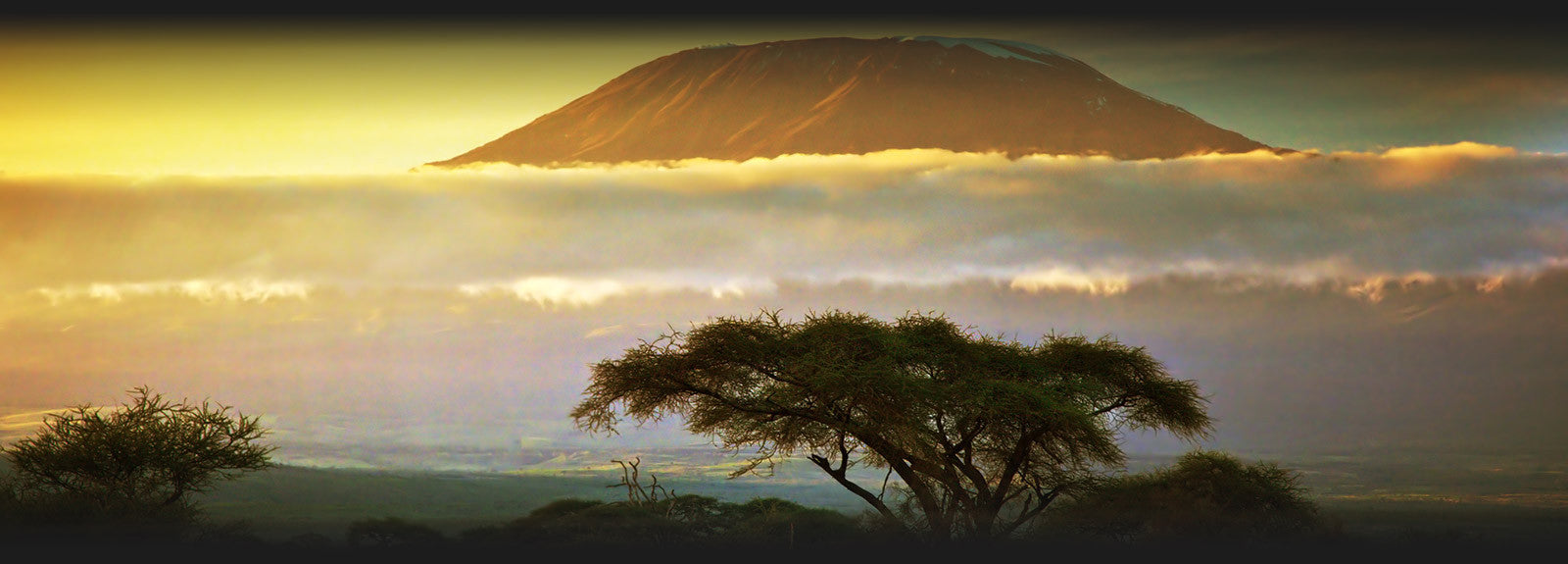Camping in winter might sound a bit crazy, but Kilimanjaro Gear expert Connor has the how-to tips you need for a safe, comfortable and fun winter camping adventure.
How to Camp in Winter - Part 2
You’re still reading after Part 1? Looks like you actually are interested in winter camping! Congratulations in making it this far, you are in for a treat.
In Part 1, we covered the apparel required to keep you dry, comfortable, warm and happy. In this article we will discuss the necessary gear for snow travel, camping, and sleeping.
As I mentioned in Part 1, good equipment can cost a pretty penny. Don’t take shortcuts here as cheaper equipment will either fail or not perform adequately when you need it most. That said, we do our best to provide the best gear information for all price ranges.
Tent
The first thing most people think of when camping in the snow is, “Where do you sleep?” The answer is: usually in a solid 4-season tent.

People often ask me: “I own a 3-season tent. Can I use it for snow camping?” My usual answer is “It depends”, but I really mean “Probably not”.
The primary differences between a 3 and 4 season tent are cost, strength, durability and the rain fly. A 3-season tent has a mesh ceiling for ventilation along with an optional rain fly that extends about 3/4th of the way down the tent, allowing for air flow.
This is nice during summer and spring months but in heavy snow with wind, your tent will fill with snow by morning! Talk about a wake-up call!
A 4-season tent has the durability to withstand heavy snow weight and high winds. They also include a vestibule area in the front of a tent you can use for cooking without leaving the tent. If you’re serious about snow camping, this is a must purchase.
I personally have used the Mountain Hardwear Evo 3-person tent for a few years now and love it. For a list of the best 4 seasons tents out there currently click here. If you are just starting out, I advise buying a cheaper or used 4-season tent as you can save hundreds of dollars.
(Pro Tip: If you know that there will be no wind and snow, you can get away with a three season by digging your tent into the snow about 1-2 feet).
Sleeping Pad
Sleeping pads insulate you from the cold ground under your tent. During the summer months, it’s easy to get away without a pad as the ground is usually warm enough to sleep on.
When sleeping on snow, you’ll be cold without a pad or some form of insulation beneath you - even if you have the warmest sleeping bag on the market.
The most important consideration when buying a pad is the R-Value. The higher the R-value, the more insulated the pad is (and the warmer you’ll be). For snow, a pad with an R-Value over 4 is recommended for maximum warmth.
I use the Big Agnes Q-Core SLX which has an R-Value of 3 and it fares nicely for most of my trips. Click here for list of the best winter sleeping pads

Sleeping Bag
It goes without saying that camping in snow means cold nights! In California, the coldest snow camp night I've experienced was 10 degrees Fahrenheit. I used my Kelty Ignite 15 degree down sleeping bag. It was a bit of a chilly night, but thanks to a quality sleeping pad and warm tent, I slept comfortably.
When choosing the warmth of your bag, determine what temperatures you will be sleeping in and how packable you need your bag. If you are backpacking and need a lighter weight bag, you'll spend more to get the warmth you need. Down bags are the best choice, but you can also find very warm synthetic bags for a decent price.
I found a great bag that offers a nice compromise on weight, packability, warmth and price. The Mountain Hardwear Lamina Z-Bonfire -30 bag is a great synthetic bag that is priced at only $225 and weighs 6 pounds, 9 ounces.

Synthetic sleeping bags are great during winter months as they are much more durable and do not lose their warmth when wet. Waterproof down compacts better, is lighter weight, but is much pricier. For a list of the best winter sleeping bags, click here.
(Pro Tip: before going to sleep at night, heat up water and pour it into a water bottle and place it in your sleeping bag. The warm water will last several hours and keep you extra toasty).
Snowshoes
If you plan on camping anywhere with deep snow, you'll need snowshoes to walk or hike any meaningful distance. Snowshoes make walking through snow much easier by distributing your weight over a larger surface area, preventing you from sinking in the snow.

For walking and hiking moderate distances, basic snowshoes are adequate. I've used the Redfeather Trek Snowshoe for the past three seasons and they still work perfectly. For a list of the best snowshoes, click here.
Cold Weather Camp Fuel
If you already have a summer camp stove, you should be good for snow camping, as long as you use fuel rated for cold weather conditions.

I always purchase Snowpeak GigaPower camp fuel as it works down to 15 degrees and has never let me down. Remember to also bring more fuel than you would during non-winter months as you may have to melt snow for water and food will take longer to heat up at higher elevations.
Snow Shovel
Finally, you're going to want a snow shovel. It's ideal for building and shaping your cooking, sleeping, and restroom areas in the snow. It works much faster and keeps your hands warmer than digging with your gloves. Any snow shovel will work, however, I use the Brooks Range Compact Sharktooth Snow Shovel. This shovel is great as it breaks down into two small pieces and is very lightweight.
Snow More to Say
There you have it you crazy snow campers. Follow these tips and you’ll find yourself enjoying camping season, every season. If you want any more information feel free to email us as we would be happy to help!




